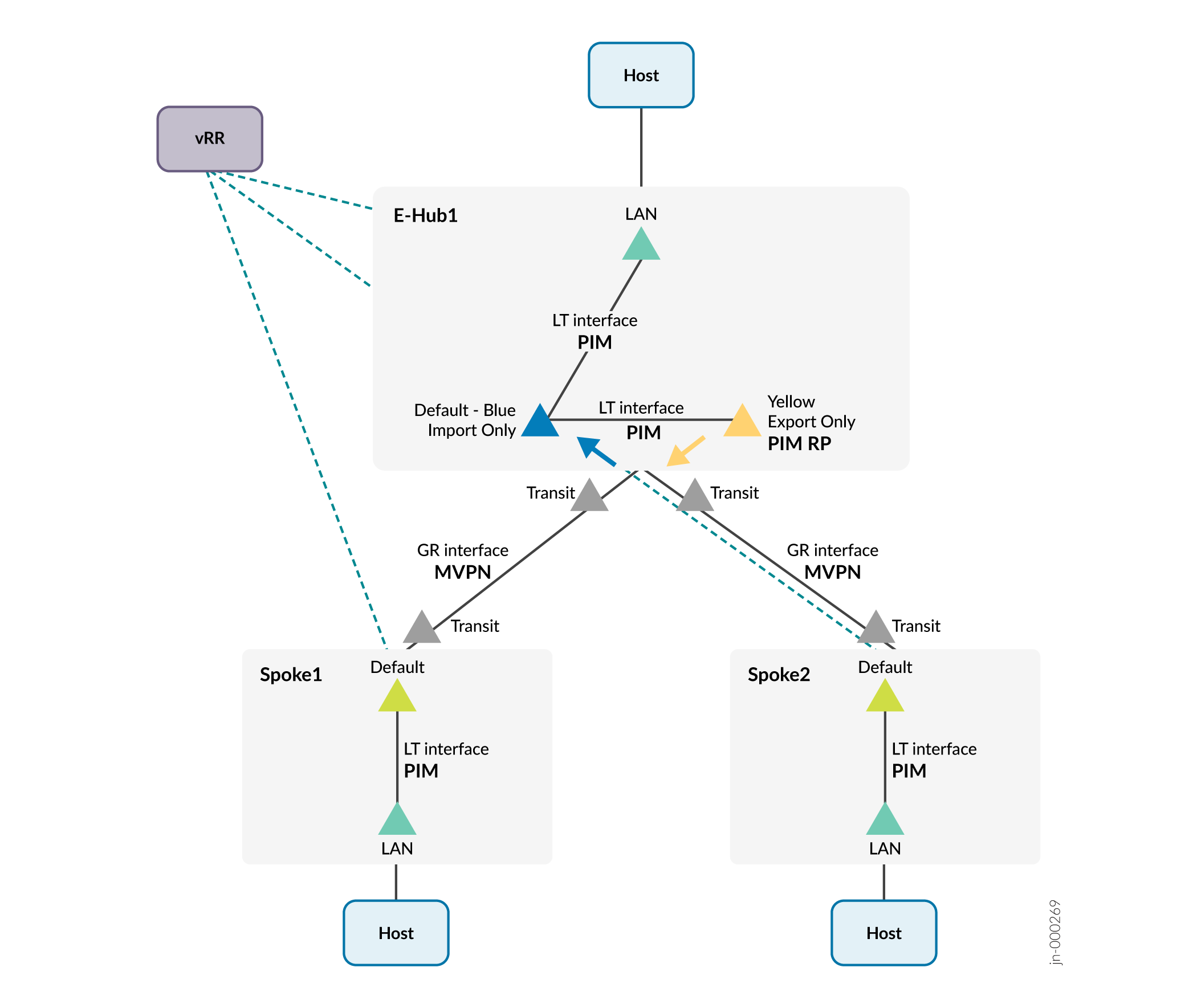ON THIS PAGE
BGP-MVPN SD-WAN Overlay
In existing unicast SD-WAN deployments, the hub and spoke architecture is modified to ensure that the spokes are aware of all the routes. Multicast is overlaid on this existing deployment. No additional configuration is required.
The unicast SD-WAN implementation introduces an additional VRF (yellow) on the hub that allows the traffic to traverse all routes. The yellow VRF only handles export of routes and the existing default VRF (blue) handles only import of routes. These VRFs are internally connected through the LT interface. This configuration allows the hub to advertise routes received from spokes to other spokes as if they originated from the hub itself. Therefore the spokes are aware of specific routes from other spokes.
Unlike unicast, a table jump next hop is not permissible in multicast and the traffic must traverse the extra hop through the LT interface wherever the reachability is through LT. Multicast does not apply advanced policy-based routing and hence will be applicable only in the default VRF instance.
In both the hub and the spoke, the VRF connected to the core can be considered as PE and the VRF connected to the host as CE. The multicast control plane uses the same path as that of unicast, using PIM over the LT interface and MVPN over the core GRE interface to exchange control plane information and update the forwarding routes.
Figure 1 shows the dual VRF configuration.

Spoke-side Configuration
On the spoke, PIM is enabled between the LAN VRF and the corresponding default VRF. The PIM joins traverse the LT interface from the LAN to the default VRF. MVPN is enabled on the default VRF. Source and RP reachability is configured through the LT interface so that the PIM joins are sent through the LT and the traffic follows the same path.
Hub-side Configuration
On the hub, PIM is enabled between the default blue and yellow VRFs. MVPN is also enabled on both, the default blue and yellow VRFs. There is no restriction on the import and export of MVPN routes, because it is exported and imported on both default blue and yellow VRFs. However, the yellow VRF will need to be configured as the MVPN sender site in SPT mode. The RP is configured on the export VRF (yellow) of the hub to ensure that type 5 routes are sent to all spokes to inform them of the active sources.
